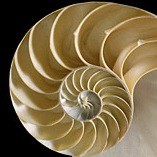This graphic compares the upper (celestial) and lower (earthly/ dunya) hemispheres of the Quranic Architectural Chart. If we add the house (pie section/ month/ first 12 suras’) numbers as “opposite side” adjacent pairs, as shown by connecting lines in the illustration below, we find an interesting pattern that highlights the significant numbers 7 and 19 in the Quran. The dark line separates the two hemispheres, the upper half representing the “celestial timeless realm” and the lower half representing the “earthly/dunya realm of time,” a central theme in the Quran.

The sums in the lower half all added to 7 (highlighted in yellow), and sums in the upper half all added to 19 (also highlighted in yellow), indicating the significance of these two numbers may relate to the two realms these hemispheres represent. The two realms are discussed at length in a previous post as the Unseen Al-Ghaib, which points out: “The ‘seven heavens’ likely involve ‘dimensions’ or worlds/realms’ between which are partitions (the word hijab), an example being the jinn, creatures normally invisible to humans.” But these seven heavens are likely not all in the Unseen realm; the stars we see at night are in the “lower heaven” which we can see (37:6). And although we cannot see the jinn, they are nonetheless part of the dunya, the lower realm (34:14, 72:8). Below we examine the numbers 7 and 19, and what they could mean in light of the graphic above. The number 7 is repeated more often (27x) than 19 (1x), and there may be a reason for this.
Continue reading
